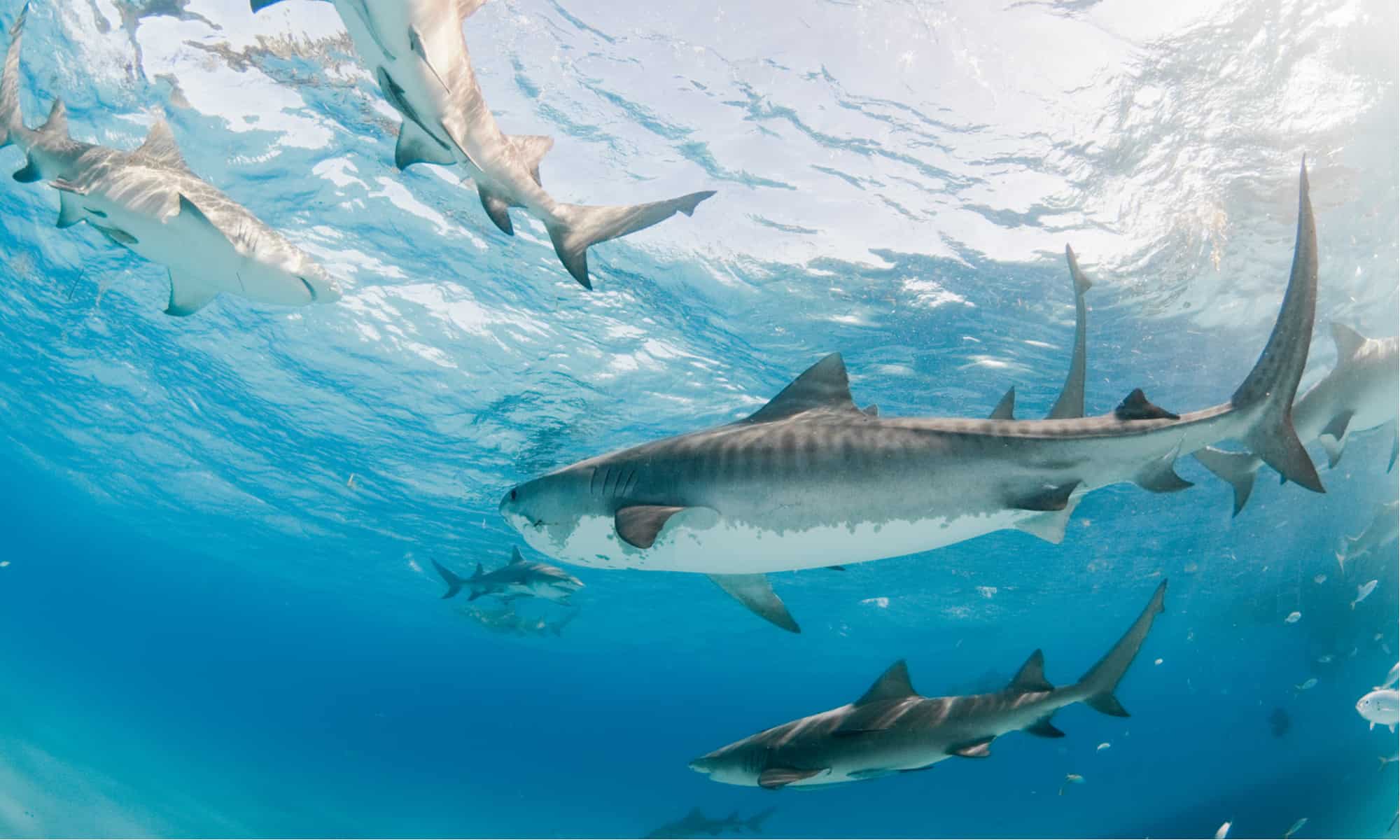In 1600, a Swedish scientist named Carl Linneaus first introduced the system of classification in which living organisms were divided into different categories based on various parameters. The highest level of classification is Kingdom, followed by the lowest and most specified one, species. Though the system underwent several modifications, the main concept remained similar, even today.
In this article, we are going to categorize scientifically, the exceptional creatures of oceans – the Sharks, to make you understand their taxonomical classification.
What Is The Scientific Classification Of Sharks?
Sharks belong to a group of cartilaginous fishes, characterized by a streamlined body, small snout, five to seven pairs of gill slits, and skin covered with small scaly dermal denticles which helps them to swim with agility in the deep ocean waters. There are more than 520 species of sharks which are scientifically arranged in the following ranks:
Rank # 1: Kingdom
The living organisms are grouped into five main kingdoms, Plants, Animals, Fungi, Protest, and Monera. Sharks belong to a Kingdom: Animalia.
Rank # 2: Phylum
Phylum is the subcategory of the kingdom. All the species having similar characteristics are grouped under this rank. The sharks belong to the Phylum: Chordata and Subphylum: Vertebrate – which indicates that this group of fishes has a backbone (vertebrae), notochord, and spinal cord as well.
Rank # 3: Class
Sharks belongs to a class Chondrichthyes which includes all the groups of fishes that have a cartilaginous skeleton. The class Chondrichthyes is further grouped into two subclasses:
1: Elasmobranchii – which includes sharks, rays, and skates.
The species are characterized by having electro-receptive organs, modified teeth, freely moving upper jaws, no swim bladder, 5 to 7 pairs of gills slit, and skin covered with small scales like derma denticles.
2: Holocephali – includes chimera.
Rank # 4: Order
The complexity of classifying the species increases at this level. The sharks are further divided into 8 Orders which are listed below along with their characteristic features:
| Orders | Features | Examples |
|---|---|---|
| Squatiniformes | The species have a flat body with a mouth at the front and lack anal fins. | Angel sharks Monk sharks |
| Pristiophoriformes | They have a long saw-like snout, the mouth is located underside, and have no anal fins. | Saw sharks |
| Squaliformes | These sharks have bulky bodies with a small snouts. They lack anal fins. | Dogfish Cookie-cutter sharks |
| Carcharhiniformes | These species have a big mouth that extended behind the eyes and are protected by a nictitating membrane. They have 5-gill slits. | Cat sharks, Shy sharks, Swell sharks, Hound sharks, Requiem sharks, Weasel sharks, and Hammerhead sharks. |
| Lamniformes | have big mouths, extended behind the eyes, and the eyes are not protected by a nictitating membrane, 5 pairs of gills. . | Basking sharks, Megamouth sharks, Goblin sharks, Great White sharks, Crocodile sharks, Thresher sharks, Porbeagle sharks, Mackerel sharks, Mako sharks, and Sand tiger sharks. |
| Orectolobiformes | They have a mouth in front of their eyes, 2 dorsal fins without spines, 1 anal fin, and 5 pairs of gills for breathing. | Wobbegong sharks, Nurse sharks, Bamboo sharks, Blind sharks, Zebra sharks, and Whale sharks. |
| Heterodontiformes | These species have 2 dorsal fins with fin spines, 1 pair of anal fins, and 5 pairs of gill slits. | Horn sharks Bullhead sharks |
| Hexanchiformes | They have only one pair of dorsal fins, one pair of anal fins, and 6 to 7 gills pairs on each side of their head. | Frilled sharks Cow sharks Six gills sharks |
Rank # 5: Family
The species are classified into families based on their close resemblance. For instance, the order Lamniformes is further categorized into 7 families including the Cetorhinidae family with only one species of Basking sharks and the Alopiiidae family with 3 species of Thresher sharks.
Rank # 6: Genus
Genus is the first word of the scientific name which is always written in italics with the first letter capital. For example, the scientific name of the Shortfin Mako shark is Isurus oxyrinchus – the first word “Isurus” is the Genus name.
Rank # 7: Species
Species is the name given to the living organism based on the type of animal and its relation with the other animals and its surroundings. The species name is always written in italics with a small letter. For instance, the scientific name of the Angel shark is Squatina squatina – the word “squatina” is the name of the species.
Final Words
To make it easy to identify and study different species of sharks, Carl Linneaus devised a taxonomic classification system. According to this system, sharks belong to the kingdom Animalia; Phylum Chordata; and Class Chondrichthyes. They have been divided into 8 different orders and their respective families based on their resemblance and other features.


